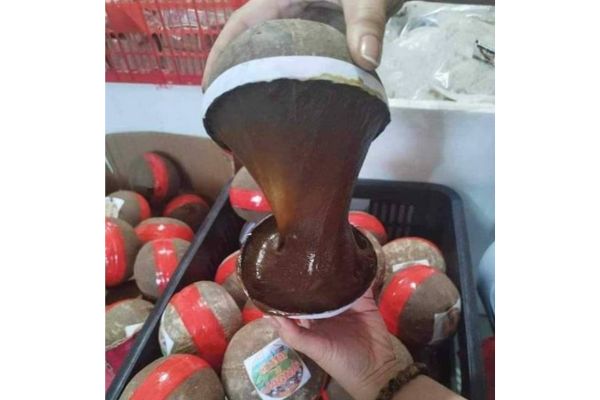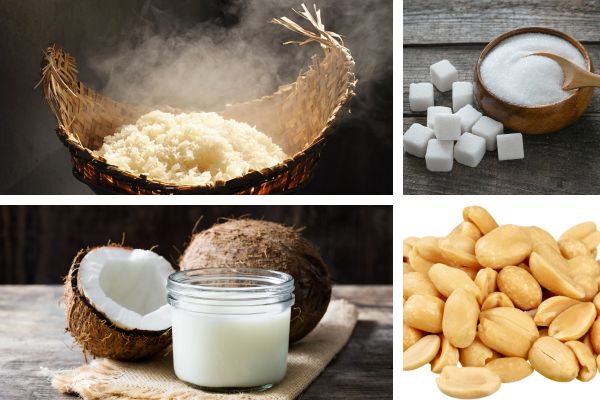Calamay – A Sweet Taste of Bohol
Calamay, also spelled Kalamay, is a beloved delicacy in Bohol, renowned for its sweet, sticky texture and rich flavor. This traditional treat is a staple in Boholano culture, often enjoyed during festivals and family gatherings. Made of coconut milk, glutinous rice, and brown sugar, its unique taste and preparation methods make it a must-try for anyone visiting the Philippines.

History and Cultural Significance
Historical Background
Calamay has a long history that dates back to the Spanish colonial period in the Philippines. Originally, it was a delicacy reserved for special occasions due to the labor-intensive process of making it. Over time, it became more accessible and gained popularity across the region, cementing its place in Boholano cuisine. The municipality of Jagna in Bohol is particularly famous for its Jagna Calamay.
Cultural Importance
In Bohol, Calamay is more than just a sweet treat, it’s a symbol of community and tradition. It is often given as a pasalubong (a homecoming gift) during festivals like the Sandugo Festival, representing hospitality and goodwill. The preparation of Calamay is a communal activity, bringing families and neighbors together, reinforcing social bonds. Boholanos love Calamay for its rich flavor and the traditional way it is made.
Ingredients and Preparation Methods

Key Ingredients
- Glutinous rice (or rice flour)
- Coconut milk
- Brown sugar
- Peanuts (optional)
Preparation Process
- Soak the glutinous rice overnight and grind it into a fine paste.
- Mix the ground rice paste with coconut milk in a large pan.
- Add brown sugar and peanuts to the mixture.
- Cook the mixture over low heat, stirring continuously to prevent burning.
- Once the mixture thickens and turns sticky, it is ready to be shaped.
- Pour the mixture into smooth coconut shells or small molds and let it cool before serving. The containers are then sealed with red crepe paper, similar to the Chinese nian gao, ensuring the sweet and sticky delicacy stays fresh.
Where to Find the Best Versions
Recommended Places
- Alburquerque Market: Known for its authentic Calamay made by local artisans.
- Loboc River Cruise: Enjoy Calamay while cruising along the scenic Loboc River.
- Baclayon Church Gift Shop: A great place to buy Calamay as a pasalubong or souvenir.
Personal Experiences
During my visit to Bohol, I had the pleasure of tasting Calamay at various locations. The Calamay from Alburquerque Market stood out with its perfect balance of sweetness and texture. I also enjoyed the unique experience of savoring Calamay while on the Loboc River Cruise, where the beautiful surroundings added to the delight of the treat. At the Baclayon Church Gift Shop, I found Calamay packaged beautifully, making it an ideal gift for friends and family back home. Bohol’s sweet delicacy truly offers a delightful taste of the Philippines.
Conclusion
Calamay is an integral part of Bohol’s culinary heritage. Its rich history, cultural significance, and delectable taste make it a must-try for visitors. Whether you enjoy it at a local market, during a river cruise, or as a gift from a church shop, Calamay offers a delightful taste of Bohol. This labor of love, with its unique combination of glutinous rice, coconut milk, and brown sugar, is a treat you don’t want to miss.
If you ever find yourself in Bohol, don’t miss the chance to try this iconic delicacy. Share your Calamay experiences with us and explore other Boholano treats on our blog. Happy tasting!
Wow, this was such a helpful read! The information you’ve shared
is not only practical but also super timely for anyone trying to improve their health.
I love how you explained it all so clearly. I’m going to
link to this article on my platform about diets and nutrition – I
know my audience will find it just as valuable. Thanks for this awesome content!